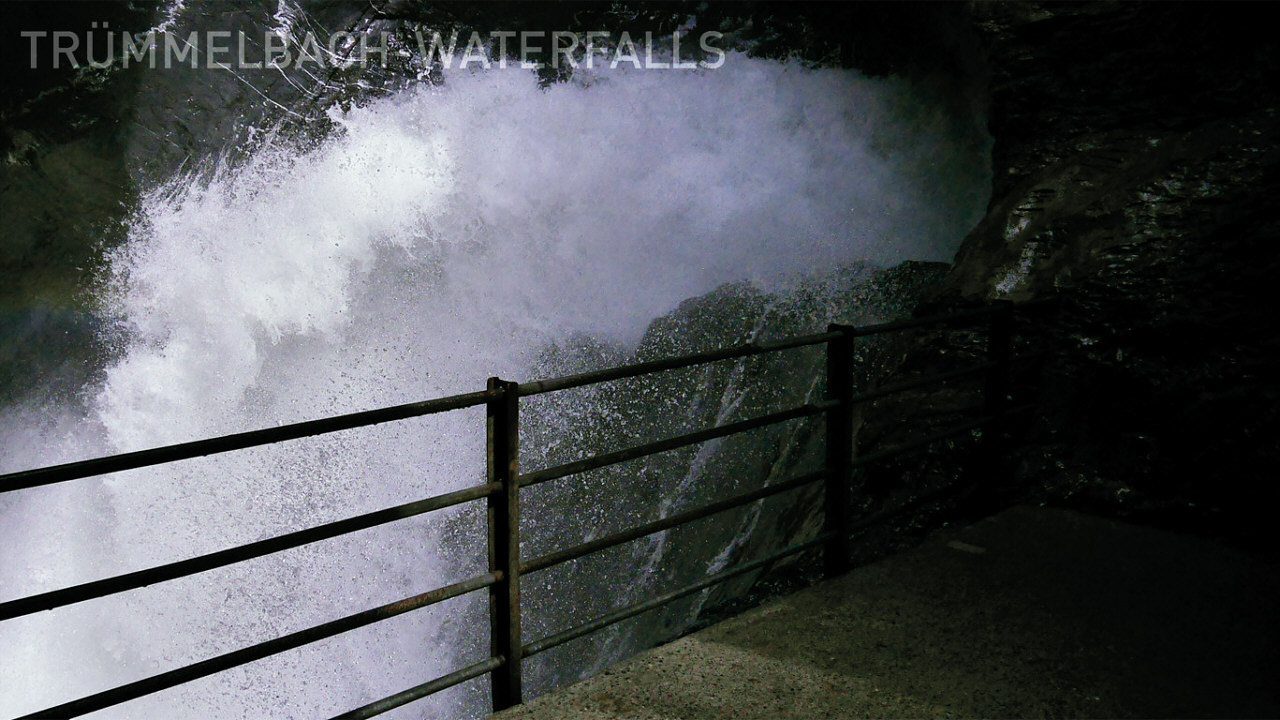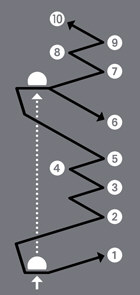
In 1877 - 1886 the lowermost falls were rendered
accessible by flights of steps and bridges. The tunnel lift,
which from the technical point of view is a funicular with
a counterweight, was constructed in 1913, at the same
time as the access to the 3 upper falls. The flight of steps
at the top of the tunnel, the gallery and lookouts were
built in 1986. The lower part of the gorge was connected to the upper half during the winter of 1990. From the interior of the mountain, rugged rock formations and 3 additional falls became visible. With that, it is now possible to walk along some 600 metres of path in the Trümmelbach Gorge. The way has been opened to 10 falls; the difference in height between the lowest and the highest fall is 140 metres. The tunnel lift is 105 metres long and rises about 100 metres, so that its gradient is approximately 45 degrees. It can carry about 40 persons and the journey takes 60 seconds, i.e. the capacity is about 500 persons per hour. The energy-saving counterweight is as heavy as the cabin would be if it held
The lower part of the gorge was connected to the upper half during the winter of 1990. From the interior of the mountain, rugged rock formations and 3 additional falls became visible. With that, it is now possible to walk along some 600 metres of path in the Trümmelbach Gorge. The way has been opened to 10 falls; the difference in height between the lowest and the highest fall is 140 metres. The tunnel lift is 105 metres long and rises about 100 metres, so that its gradient is approximately 45 degrees. It can carry about 40 persons and the journey takes 60 seconds, i.e. the capacity is about 500 persons per hour. The energy-saving counterweight is as heavy as the cabin would be if it held
about 15 persons. The walls and roof of the cabin are
made of glass. The lift was constructed in 1983, and is the
third one since the original construction in 1913.400 meters of galeries, 5 tunnels, 30 meters of bridges,
16 flood lights, 32 spot lamps.All the work was done with the greatest care and in
such a way as to minimize the human impact on the
surroundings, or even to render it entirely invisible, in
order to emphasize the grandiose natural beauty of the
falls. That is also why the shafts of electric light are
directed solely at the walkways, rocks and water. In the
precipitoussides of the gorge, which are virtually
inaccessible to man, one finds primeval mountain
woodland with Alpine roses, rare ferns and lilies. In cold
rainy weather and in winter this provides shelter for
ibex and chamois.Trümmelbach is included in the Federal Inventory of Monuments and Landscapes of National Importance.
